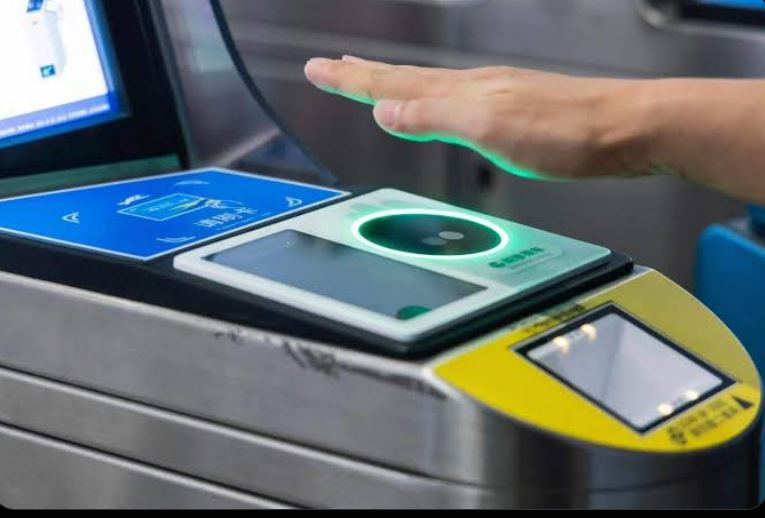In the ever-evolving world of digital transactions, palm payment technology is making waves as the next frontier in contactless payments. Gone are the days of fumbling for your wallet or even your phone—soon, all you may need to pay for goods or services is the palm of your hand. This futuristic payment method is already being tested and implemented in various industries, promising to simplify the checkout process and improve security. But how exactly does palm payment technology work, and what are its potential use cases?

What is Palm Payment Technology?
Palm payment technology allows consumers to make transactions by scanning their palms instead of using traditional payment methods like credit cards or mobile phones. The technology works by identifying the unique patterns in an individual’s palm—specifically the veins and other biometric markers—using a specialized scanner. These unique identifiers are then linked to a digital payment system, allowing the user to authorize payments simply by placing their palm over the scanner.
Major companies like Amazon have already introduced this technology through their Amazon One system, which is used in some of their stores, including Amazon Go and Whole Foods locations in the U.S.
How Does Palm Payment Technology Work?
Palm payment technology relies on biometric recognition to identify the user. Here’s a step-by-step breakdown of how it functions:
- Palm Scanning: The user registers their palm print by placing their hand over a palm scanner. This scanner uses infrared light to capture a detailed image of the veins and other unique features inside the palm, which are almost impossible to replicate.
- Biometric Data Encryption: The biometric data is then encrypted and securely stored in the cloud. This data is not stored directly on the palm reader device but rather in a secure, centralized system, which can be linked to a payment method, such as a credit card or digital wallet.
- Transaction Authorization: When making a purchase, the customer simply hovers their palm over the scanner, which reads the palm’s unique pattern. The system matches the palm’s biometric data with the stored information and approves the payment within seconds.
- Completion of Payment: Once the identity is verified and the transaction is authorized, the payment is processed, and the customer receives a confirmation, just as they would with a credit card or mobile payment.
Benefits of Palm Payment Technology
- Convenience: One of the biggest advantages of palm payment technology is its convenience. Customers no longer need to carry cash, credit cards, or even a mobile phone to make purchases. All they need is their hand, making the checkout process smoother and faster.
- Contactless Payment: In a world increasingly focused on hygiene and reducing physical contact, especially in the wake of the COVID-19 pandemic, palm payments offer a completely contactless solution. Unlike fingerprint scanners or traditional card readers, customers don’t need to touch any surfaces, which helps reduce the spread of germs.
- Enhanced Security: Biometric data, particularly palm patterns, are incredibly difficult to forge or duplicate, making this system more secure than credit card PINs or passwords. Additionally, the biometric data is encrypted and stored securely in the cloud, further safeguarding against identity theft or fraud.
- Fast and Efficient: The entire transaction process is quick and efficient, taking only a few seconds to verify and authorize. This reduces long wait times at checkout, providing a better customer experience.
Use Cases of Palm Payment Technology
Palm payment technology has a wide range of potential applications, across different industries and settings:
- Retail Stores: Palm payment systems are already being tested in retail environments such as Amazon Go and Whole Foods stores. Customers can complete their transactions quickly by simply scanning their palms, eliminating the need for traditional cash registers or checkout lines.
- Public Transportation: Palm payment technology could be used in public transportation systems, where commuters can pay their fares by scanning their palms at turnstiles, streamlining the boarding process and reducing bottlenecks.
- Hospitality and Travel: Hotels, airports, and theme parks could also integrate palm payment systems to facilitate faster check-ins, room service payments, and other transactions, creating a seamless experience for travelers and guests.
- Healthcare: Hospitals and clinics could use palm scanning technology for both payment and patient identification. A patient’s medical records could be linked to their palm print, simplifying the check-in process, ensuring accurate billing, and enhancing security around sensitive medical information.
- Workplaces and Offices: Palm payment systems could be used for employee cafeterias or office supply purchases, with employers linking palm scans to individual accounts. This would also enhance security in restricted areas, where access could be granted by palm recognition.

While palm payment technology offers numerous benefits, it also raises some concerns. One key issue is privacy—consumers might be hesitant to share biometric data, fearing potential misuse or breaches. Tech companies must ensure that these systems comply with data protection regulations and offer robust privacy safeguards.
Another challenge is adoption. Palm payment systems require specialized hardware, such as palm scanners, which could slow down widespread implementation due to cost concerns. For the technology to succeed, both retailers and consumers need to embrace it on a large scale.
Palm payment technology represents the next wave of innovation in the ever-growing world of digital payments. With its ability to offer faster, more secure, and entirely contactless transactions, it has the potential to revolutionize how we shop, travel, and access services. While challenges remain in terms of privacy and adoption, the increasing interest in biometric payments suggests that palm scanning technology may become a staple of our daily lives in the near future. As companies like Amazon lead the charge, it’s only a matter of time before we see this futuristic technology gain wider traction across industries.

